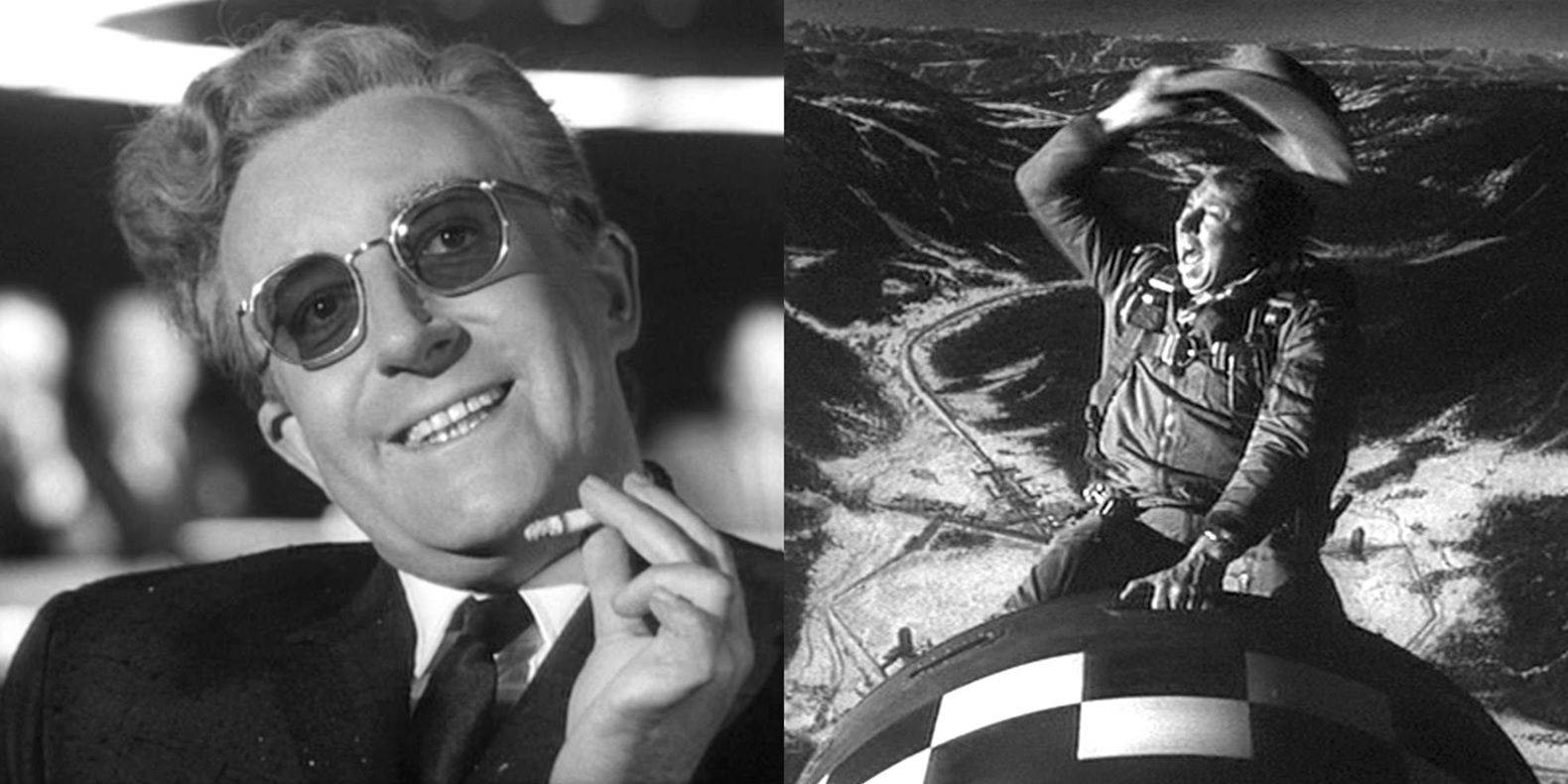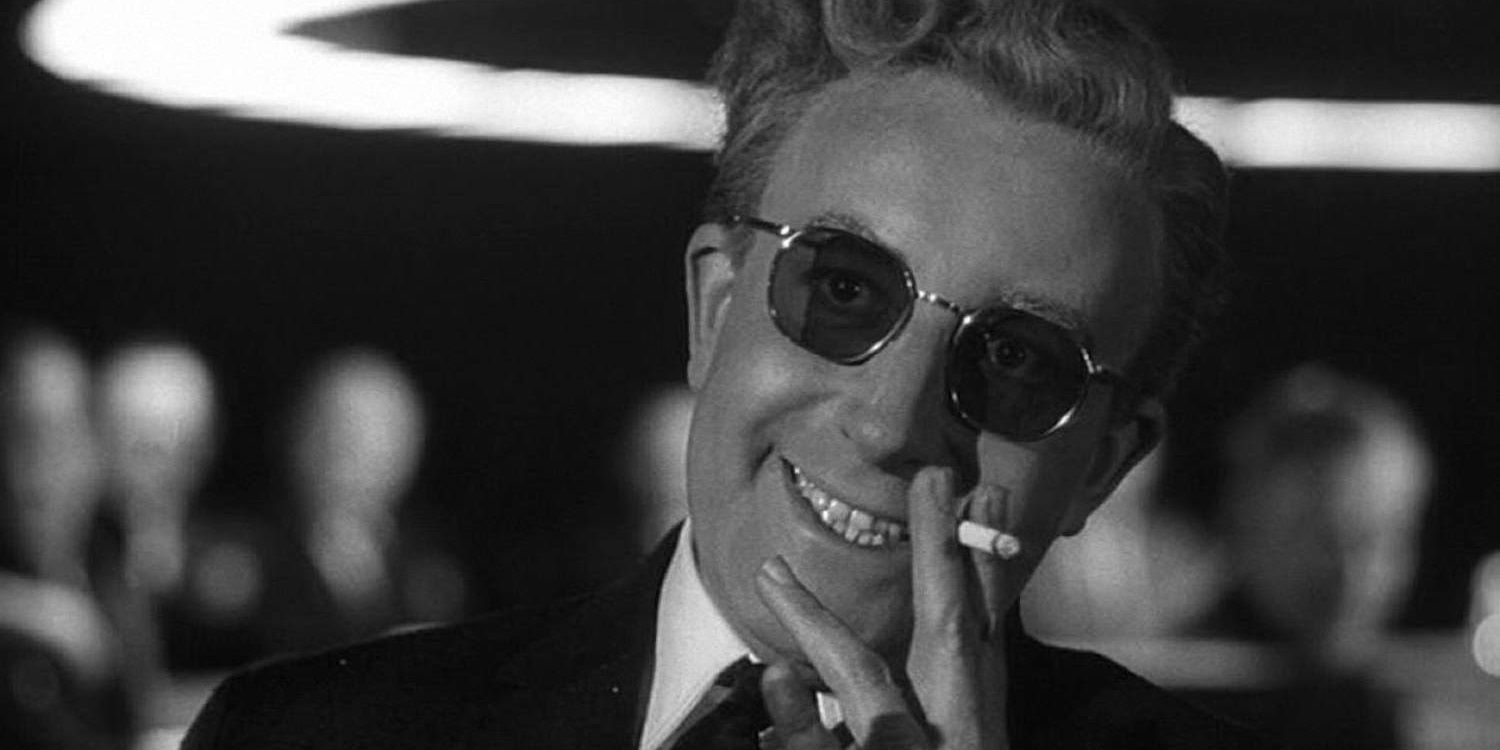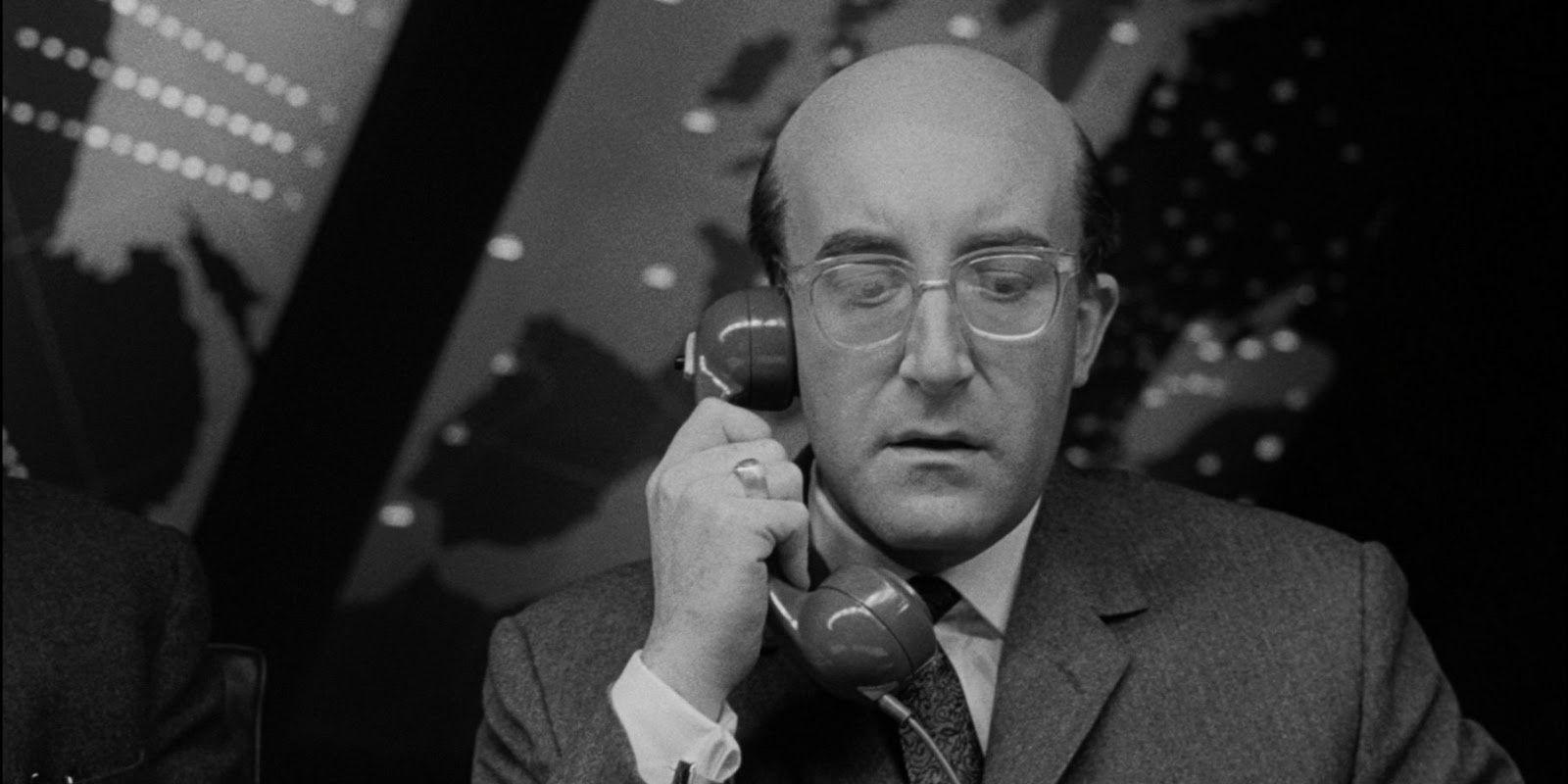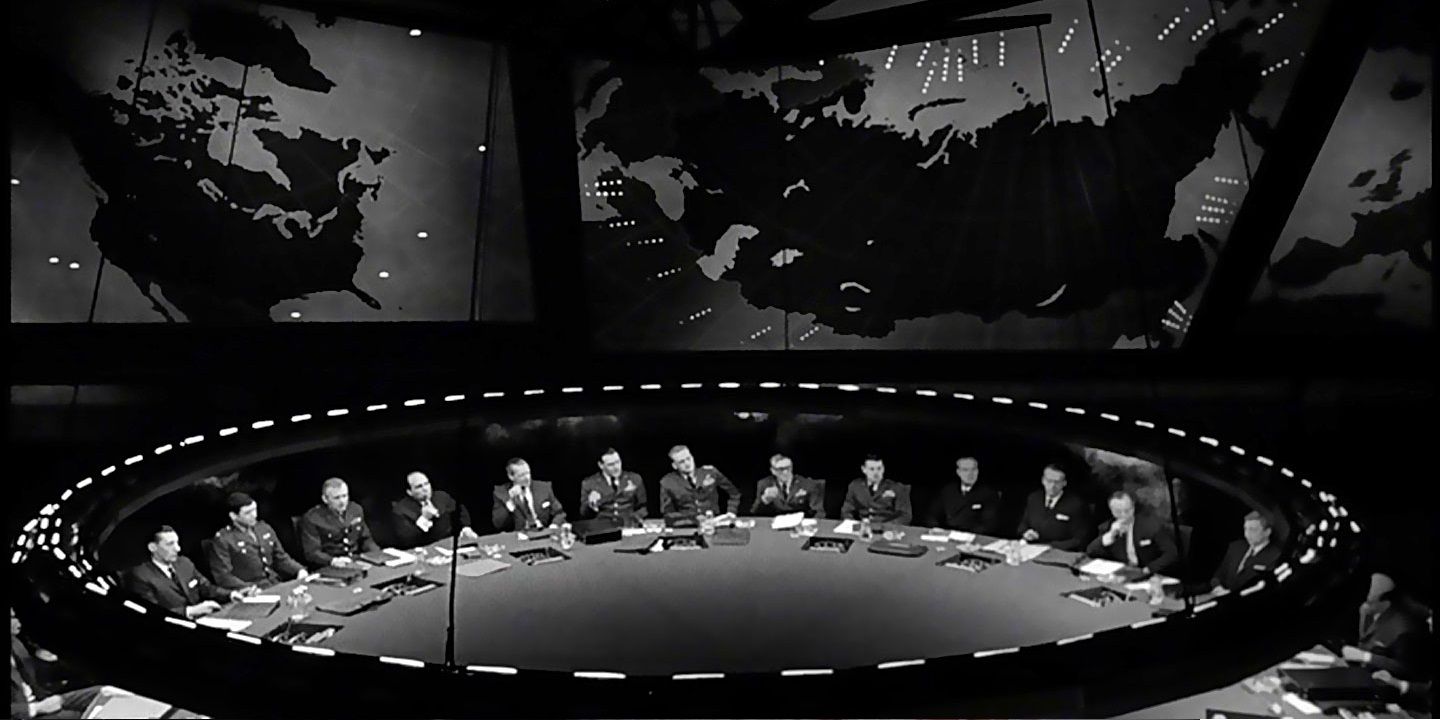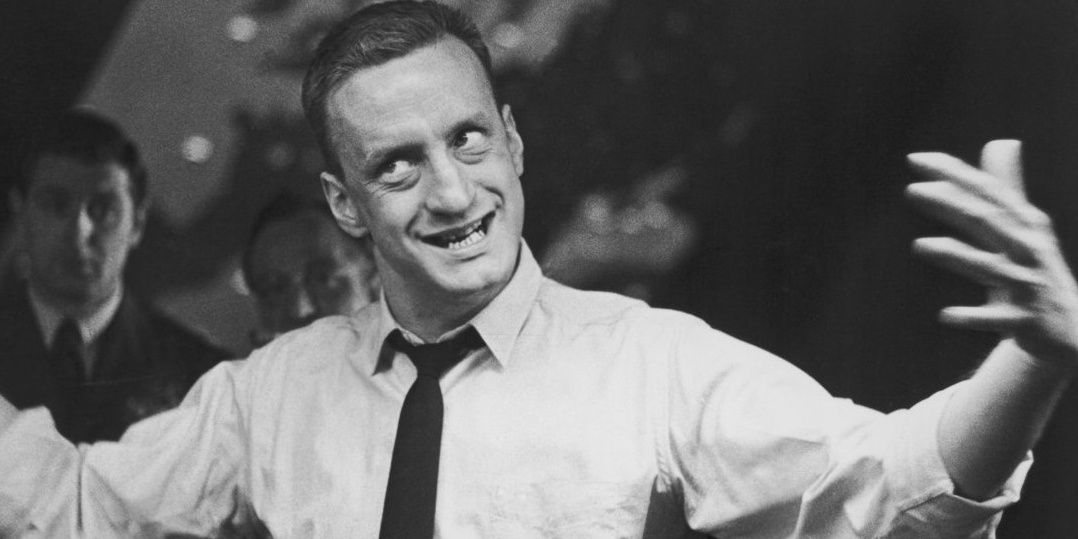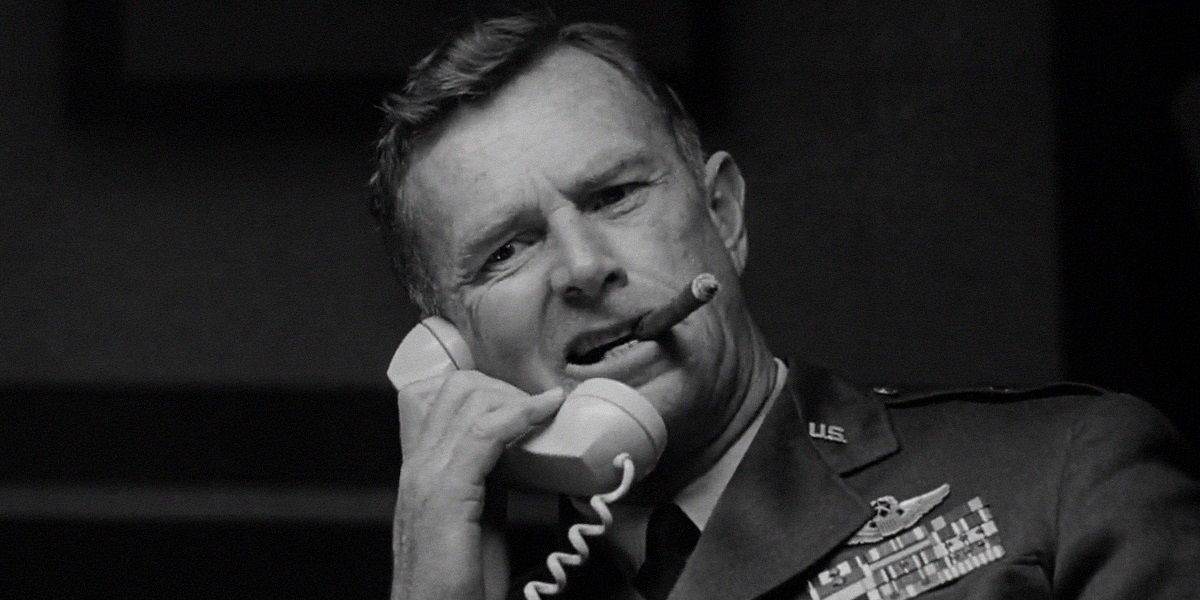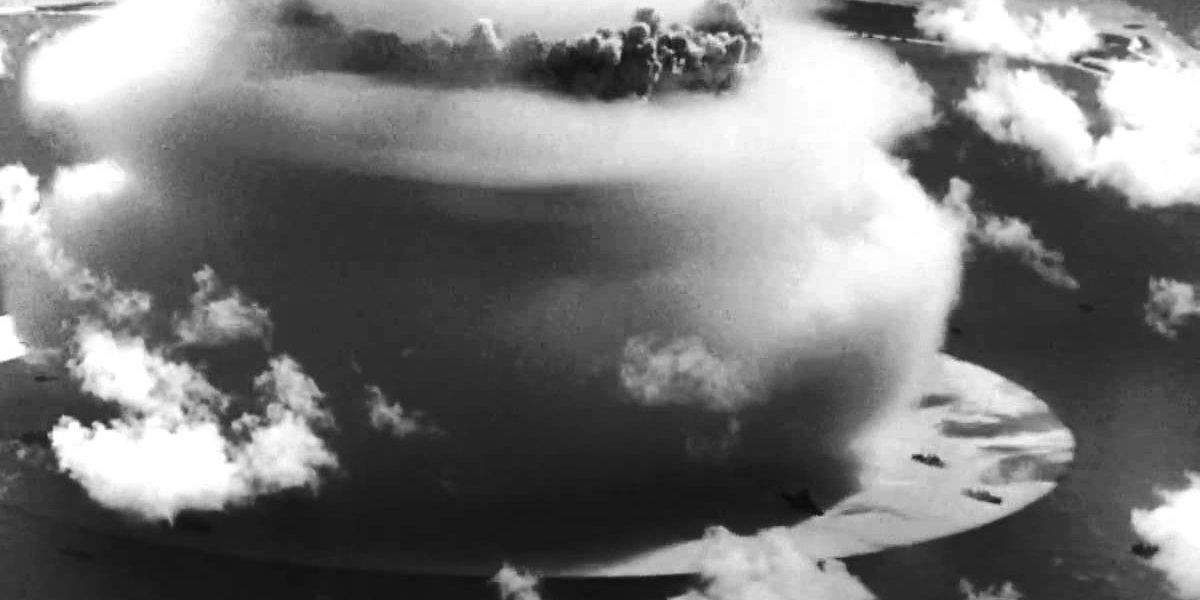Stanley Kubrick’s seminal 1964 comedy Dr. Strangelove lampooned the Soviet Union and the nuclear arms race at the height of the Cold War. Praised as arguably the greatest political satire ever made, Dr. Strangelove revolves around an unhinged U.S. general singlehandedly launching a nuclear attack on the Soviet Union, effectively kickstarting World War III.
Although the particular war that Dr. Strangelove satirized has since ended, Kubrick’s deconstruction of the absurdity of war remains a timeless gem and the movie is still more than worthy of a watch today.
Peter Sellers’ Trio Of Hysterical Lead Performances
Comics like Eddie Murphy and Mike Myers who play multiple roles in their movies were inspired by the legendary Peter Sellers, who played three lead roles in Dr. Strangelove.
Each of Sellers’ characters is as funny as the last. He plays Group Captain Lionel Mandrake, a meek British RAF exchange officer who tries and falls to prevent a nuclear fallout; President Merkin Muffley, the hysterically ineffective President of the United States; and, of course, Dr. Strangelove, the ex-Nazi nuclear war expert obsessed with making doomsday happen.
Kubrick’s Timeless Satire Of War
Although Dr. Strangelove specifically satirized the then-ongoing Cold War, its ridicule of the broader concept of war has proven to be timeless. Its political satire is just as incisive today as it was in the ‘60s, attacking a few universal truths about government and military that still resonate today.
There are certain scenes in Dr. Strangelove that play like live-action political cartoons, like when Mandrake has to buy a Coke to get change for the payphone to get the U.S. government to call off a nuclear strike.
Ken Adam’s Iconic Set Design
Ken Adam is one of the most acclaimed production designers of all time. He’s known as the designer of a bunch of iconic Bond villains’ lairs. He also came up with a film set version of Fort Knox for Goldfinger that was astoundingly accurate considering he couldn’t visit the real place for reference.
After his work on the Bond franchise put him in high demand, Kubrick tapped Adam to design the War Room for Dr. Strangelove. The War Room is now remembered as one of the most iconic sets in film history. Its expressionist look recalls the bizarre, foreboding set design of Metropolis and The Cabinet of Dr. Caligari.
George C. Scott’s Deadpan Supporting Turn
George C. Scott gives a brilliant supporting performance in Dr. Strangelove as General Buck Turgidson, the Chairman of the Joint Chiefs of Staff. He acts as a sort of right-hand man to the President, desperately trying to advise him of the best course of action as the situation continually deteriorates.
As a straightforward dramatic actor with little experience in comedy, Scott chose to play every scene completely straight, which made him a perfect foil for the zany stylings of Peter Sellers. Scott settles into this deadpan role beautifully. He even plays off an accidental pratfall in the War Room.
Quotable Dialogue
All the best comedies have endlessly quotable dialogue, and Dr. Strangelove has quotable lines in spades, from “The whole point of the doomsday machine is lost if you keep it a secret,” to “Mein Führer, I can walk!” to General Ripper’s monologue about “the international Communist conspiracy to sap and impurify all of our precious bodily fluids.”
“Gentlemen, you can’t fight in here! This is the War Room!” is one of the most iconic one-liners in the history of comedy movies. Dr. Strangelove is as quotable as Anchorman or The Big Lebowski. Renowned satirist Terry Southern has a writing credit on the movie, and he undoubtedly contributed some sharp lines to the script.
Gilbert Taylor’s Black-And-White Cinematography
It was an interesting choice on Kubrick’s part to shoot Dr. Strangelove in black-and-white. Gilbert Taylor’s grainy black-and-white cinematography suggests a documentary style, which contrasts hilariously with the ludicrous events on-screen.
The black-and-white palette also allowed Kubrick to play around with shadows and establish a noir aesthetic, like General Ripper filling the screen with puffs of cigar smoke.
The Absurdity Of Major Kong Riding An H-Bomb
Slim Pickens gives a hilarious turn in Dr. Strangelove as Major Kong. The movie’s climax is based around Kong as the plane arrives above its target, but the faulty bomb bay doors prevent the troops from dropping the H-bomb.
After repairing the electrical wires while straddling the bomb, Kong rides the bomb down to its target, crying out “Yee-haw!” and waving his cowboy hat around. The absurdity of this image will never fail to get a laugh.
The Ironic “We’ll Meet Again” Finale
The final scene of Dr. Strangelove gives the movie a perfect punchline as Vera Lynn’s “We’ll Meet Again” plays over a montage of all life on Earth being wiped out in a nuclear holocaust. It’s arguable that no filmmaker besides Kubrick could play a manmade apocalypse for hysterical laughs.
There’s a bittersweet irony in the juxtaposition of nukes blowing up humanity against the song that got the Allies through World War II. It suggests that the WWII-era optimism of Lynn’s heartfelt classic is meaningless in the age of mutually assured destruction.

